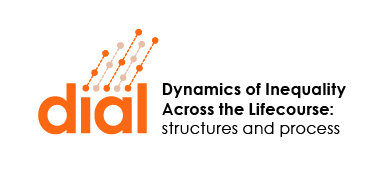There are a number of key European policy agendas related to income on which the DIAL research can shed light. This policy brief gives an overview of findings from DIAL projects in this area. Key Findings A widening gap between those with ‘advantaged’ and ‘disadvantaged’ employment and family trajectories has led to increased wealth inequality … Read more
DIAL Policy Brief No. 8 ‘Working towards reducing income and wealth inequalities: What can policymakers learn from Dynamics of Inequality Across the Life-course (DIAL) research?’
Between communism and capitalism: long-term inequality in Poland, 1892–2015
This paper looks at the evolution of inequality in Poland from the late 19th Century to the early 21st Century, by constructing the long-term distribution of income in Poland from combining tax, household survey and national accounts data. It documents a U-shaped evolution of inequalities from the end of the 19th century until today: (i) … Read more
From unidimensional to multidimensional inequality: a review
We review results concerning the representation of partial orders of univariate distributions via stochastic orders and investigate their applications to some classes of stochastic dominance conditions applied in inequality and welfare measurement. The results obtained in an unidimensional framework are extended to multidimensional analysis. We discuss difficulties arising from aggregation of multidimensional distributions into synthetic … Read more
Optimal taxes on capital in the OLG model with uninsurable idiosyncratic income risk
We characterize the optimal linear tax on capital in an Overlapping Generations model with two period lived households facing uninsurable idiosyncratic labor income risk. The Ramsey government internalizes the general equilibrium effects of private precautionary saving on factor prices and taxes capital unless the weight on future generations in the social welfare function is sufficiently … Read more
The lost ones: The opportunities and outcomes of white, non-college-educated Americans born in the 1960s
White, non-college-educated Americans born in the 1960s face shorter life expectancies, higher medical expenses, and lower wages per unit of human capital compared with those born in the 1940s; men’s wages declined more than women’s. After documenting these changes, we use a life-cycle model of couples and singles to evaluate their effects. The drop in … Read more
Sources of U.S. wealth inequality: Past, present, and future
The distribution of wealth in most countries for which there is reliable data is strikingly uneven. There is also recent work suggesting that the wealth distribution has undergone significant movements over time, most recently with a large upward swing in dispersion in several Anglo-Saxon countries (Piketty 2014; Saez and Zucman 2016). For example, according to … Read more
The role of partnering and assortative mating for income inequality: The case of Finland, 1991–2014
This paper considers why, contrary to expectations, relationships between people with similar backgrounds, especially similar levels of education, hasn’t done more to increase income inequality. It finds that what matters more for inequality is a combination of background characteristics and a consideration of who partners in the first place. The research uses Finnish register data … Read more
Golfing with Trump. Social capital, decline, inequality, and the rise of populism in the US
This paper analyses the extent to which the 2016 election of Donald Trump—and his failed re-election bid in 2020 – are, as often claimed, linked to lower levels of community engagement in the United States and rising inequality. It suggests an alternative view might be more accurate and that the rise in votes for Trump … Read more
Inference for the neighbourhood inequality index
The neighborhood inequality (NI) index measures aspects of spatial inequality in the distribution of incomes within a city. It is a population average of the normalized income gap between each individual’s income (observed at a given location in the city) and the incomes of the neighbours located within a certain distance range. The approach overcomes … Read more
Robust cross-country analysis of inequality of opportunity
International rankings of countries based on inequality of opportunity indices may not be robust vis-à-vis the specific metric adopted to measure opportunities. Indices often aggregate relevant information and neglect to control for normatively irrelevant distributional factors. This paper shows that gap curves can be estimated from cross-sectional data and adopted to test hypotheses about robust cross-country comparisons … Read more
